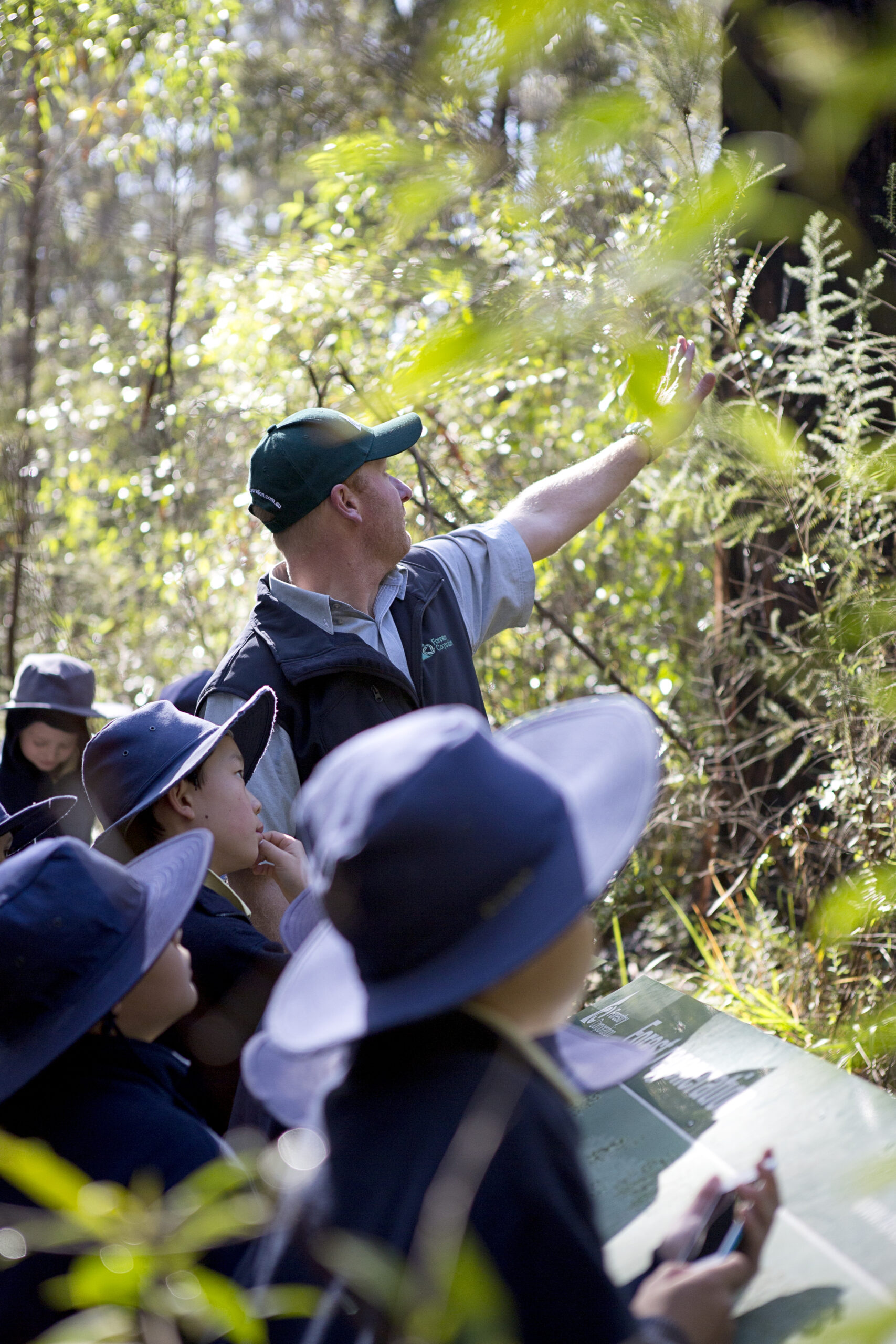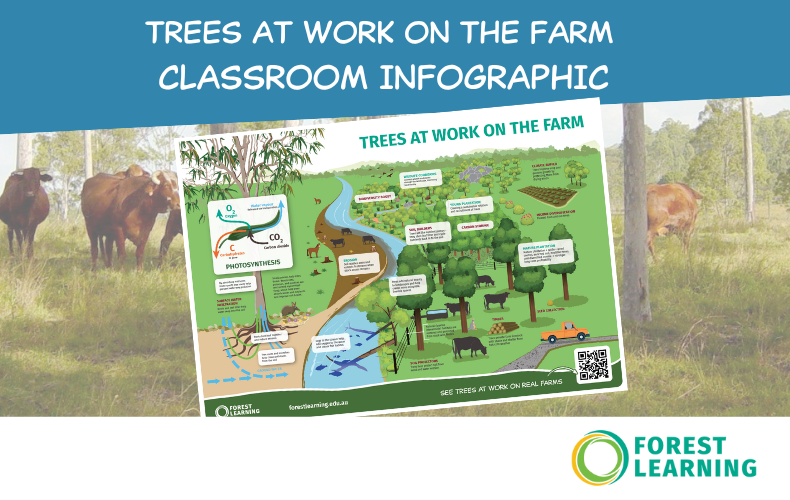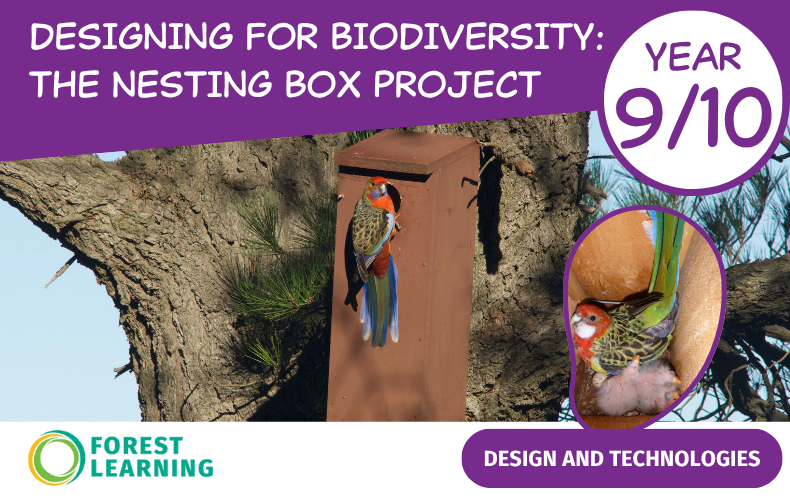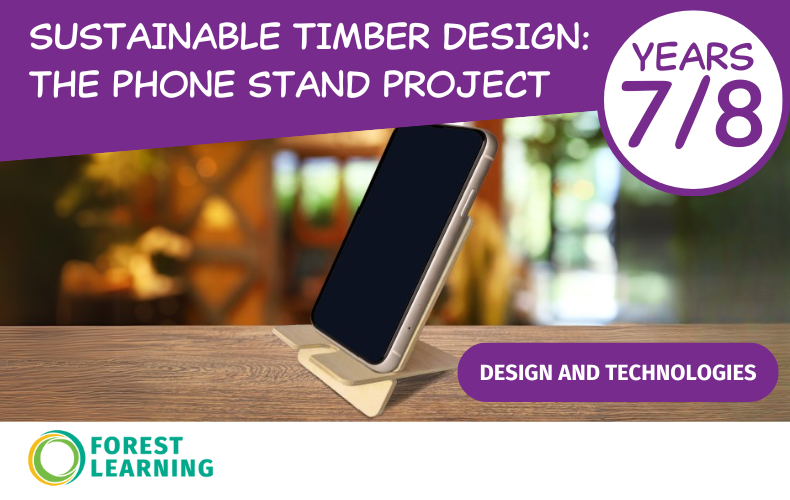Teaching Geography Through the Lens of Forests and Sustainability
![]() 03 April 2025
03 April 2025
Teaching Geography Through the Lens of Forests and Sustainability

As geography education continues to rightly emphasise real-world learning, forests offer an ideal lens for exploring environmental processes, land use, and human-environment interactions. With Australia’s forests covering around 17% of land area, they provide a tangible and relatable context for teaching everything from biomes to water systems — helping students develop a deep understanding of sustainability in action.
Far from being a single-topic issue, forests — and the renewable resources they can provide when managed sustainably — connect to multiple strands of the Australian Curriculum: Geography — supporting teachers to explore landforms, ecosystems, climate, natural hazards, resource management, and Indigenous land stewardship. ForestLearning provides AGTA Education Award-winning, free, curriculum-aligned resources designed to help teachers confidently bring this topic into the classroom, with immersive tools like ForestVR™, hands-on activities, and partnerships with industry experts and peak teacher associations such as GTAV.
A Natural Fit for Geography Topics
Australia’s diverse forests — from towering dry forest spotted gum to tropical rainforests and managed pine plantations — provide a powerful context for key geography topics such as:
- Years 5–6 – People, Place and Environmental Management
‘Highly Commended’ – 2024 AGTA Education Awards
Sustainable Schools: Going Green in Your Canteen is a cross-curricular HASS and Design and Technologies unit exploring sustainable material use in school settings. where and how wood fibre is sourced in society, and empowers student action through production of a rayon cutlery pouch. - Year 7 – Water in the World (coming soon)
Explore the role forests play in water quality, catchments, and how vegetation affects the movement and availability of water in landscapes. - Year 8 – Landscapes and Landforms
Investigate how natural processes such as erosion, fire, and regeneration shape forested environments with Forest Landscapes of Australia and the World. - Year 9 – Biomes and Food Security (coming soon)
Analyse forest ecosystems as productive landscapes — supporting biodiversity, ecosystem services, and materials used in everyday life. - Year 10 – Environmental Change and Management
‘Highly Commended’ – 2022 AGTA Education Awards.
Evaluate how sustainably managed forests balance conservation with renewable resource production with the unit Environmental Change and Forest Management.
“Forests help students understand that human-environment interactions don’t have to be destructive — they can also be regenerative, carefully managed, and science-informed,” says Veronica Tyquin, ForestLearning Curriculum Specialist.
Shared Goals: Teaching Sustainability Through Forests
Sustainability is a cornerstone of geography education — and sustainable forest management offers a real-world context for understanding how landscapes, ecosystems, and resources can be managed responsibly. From seed to regeneration, students can see how natural systems are shaped over time to balance biodiversity, environmental values, cultural values, carbon storage, community needs and recreation, to renewable material use.
For many students — and even some educators — this challenges common assumptions. ForestLearning’s resources can unbiasly help unpack the often-misunderstood difference between deforestation and sustainable forest management. Students explore how, when managed with sustainable forest management certification processes that include long-term planning and care for ecosystem health, forests can continue to provide environmental, social, and material benefits over generations.
Tools like GIS mapping, Google Earth, and satellite imagery allow students to explore how forested landscapes change over time and how technology is used in the real world to track forest health, regeneration, monitor land use, and assess environmental impacts — making abstract sustainability concepts real and visible.
Geography and Indigenous Land Management
Forests also offer an entry point to embed Aboriginal and Torres Strait Islander Histories and Cultures, as required by the Australian Curriculum. Indigenous fire management practices, such as cultural burning, have shaped Australian landscapes for thousands of years. Exploring these systems within forest contexts helps students understand sustainable land use, connection to Country, and cultural values tied to landscape stewardship. It also highlights the importance of preserving and protecting Aboriginal cultural sites within forests, and the value of enabling First Nations communities to maintain access to Country for cultural practices, teaching, and knowledge-sharing.
Real-World Careers and Pathways
Geography education is also about preparing students to be future decision-makers — and forestry intersects with careers in environmental science, GIS and mapping, land management, and climate planning. ForestLearning’s career-focused resources introduce students to the many roles in sustainable forestry, from ecologists and foresters to spatial analysts and conservation specialists.
Students can engage with ForestLearning’s Using Geographical Information Systems in Sustainable Forestry video and accompanying Kahoot! quiz — showcasing how professionals map, monitor, and manage forests across Australia — and the Forester Time webinar featuring Sarah Maddison, a GIS Forester from HQPlantations, who shares insights into her career path and the tools she uses, including UAVs, remote sensing, and spatial technologies. This webinar complements the classroom learning experience and was also featured in Interaction Vol. 49 No. 1, published by the Geography Teachers’ Association of Victoria.
Through virtual reality, career videos, and the Industry Education Champions program, students can hear directly from practicing professionals using geography skills in the real world.
Bringing Forests to Life with Virtual Fieldwork – ForestVR™
Many students, especially in urban areas, have never experienced a forest ecosystem firsthand. ForestVR™ helps bridge that gap — offering immersive, 360-degree experiences where students can explore forest cycles, observe regeneration after harvest, and follow the journey of wood as a renewable material.
With over 100,000 students and teachers already reached, ForestVR™ is becoming a valuable geography tool — perfect for supporting sustainability units, fieldwork prep, or remote learning. In recognition of its impact, ForestVR™ was awarded Winner of the 2022 AGTA Education Award for Best Digital/Online Resource.
“This is an outstanding and immersive online resource, linking forestry to real-world applications and the curriculum. It is beautifully presented and provides a great platform for engagement in Geography,” said AGTA Awards judges.
- Request a loan kit (free – just cover postage): [insert link]
- Or view online with any classroom device: www.forestlearning.edu.au/forestvr
Unlocking Real-World Context with ForestLearning’s Industry Education Champions
 Would you like your students to see how geography skills are used in the real world? ForestLearning’s Industry Education Champions program connects schools with passionate professionals from across the forest and wood products sector — from spatial analysts and foresters to sustainability officers and environmental scientists.
Would you like your students to see how geography skills are used in the real world? ForestLearning’s Industry Education Champions program connects schools with passionate professionals from across the forest and wood products sector — from spatial analysts and foresters to sustainability officers and environmental scientists.
Whether it’s a classroom visit, virtual Q&A, field work site, or hands-on workshop, these Champions bring lived industry experience directly into your teaching, helping students understand how geography, sustainability, science, and technology intersect in modern forest management.
Email info@forestlearning.edu.au to be connected with a Champion in your region.
Sneak Peek: Geography Forest Fieldwork Skills Toolkit
ForestLearning is currently partnering with the Forest Education Foundation (FEF) and experienced geography teachers to develop a new Geography Forest Fieldwork Skills Toolkit. This upcoming toolkit will support primary and secondary teachers to plan and deliver meaningful geography fieldwork experiences and geographical inquiry in forest contexts, aligned to the Australian Curriculum v9.0.
It will include:
- Scaffolded fieldwork skills across year levels (e.g., quadrats, observation, data collection, spatial technologies)
- Step-by-step guides and adaptable templates for use in forest locations
- Links to key themes such as land use, sustainability, water quality, and environmental change
Interested in shaping or trialling this resource? We’re looking for teachers to join the working group or pilot test the toolkit in its early stages.
Contact us at info@forestlearning.edu.au to express your interest.
Explore More
Looking for ready-to-use geography resources? Start here!





